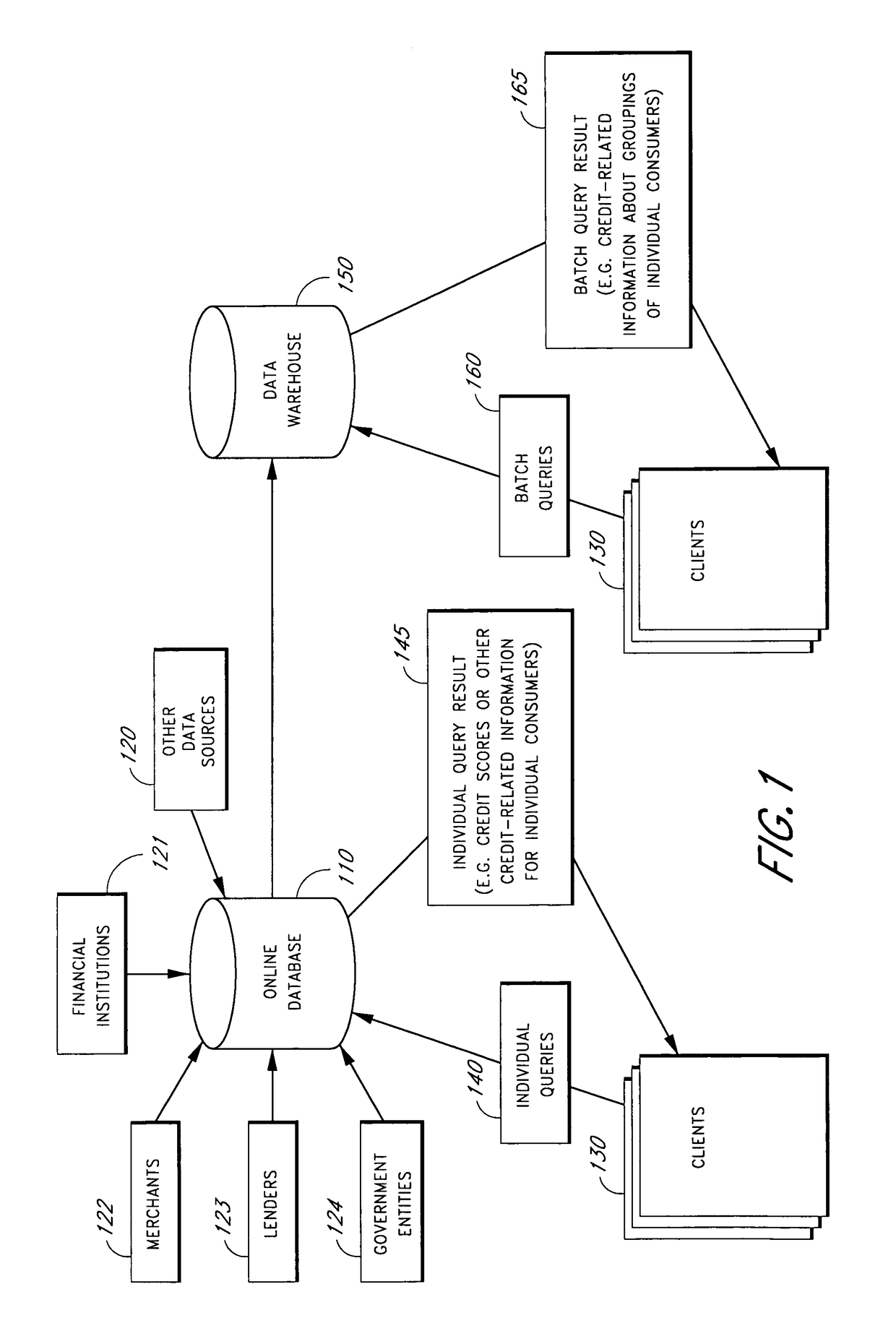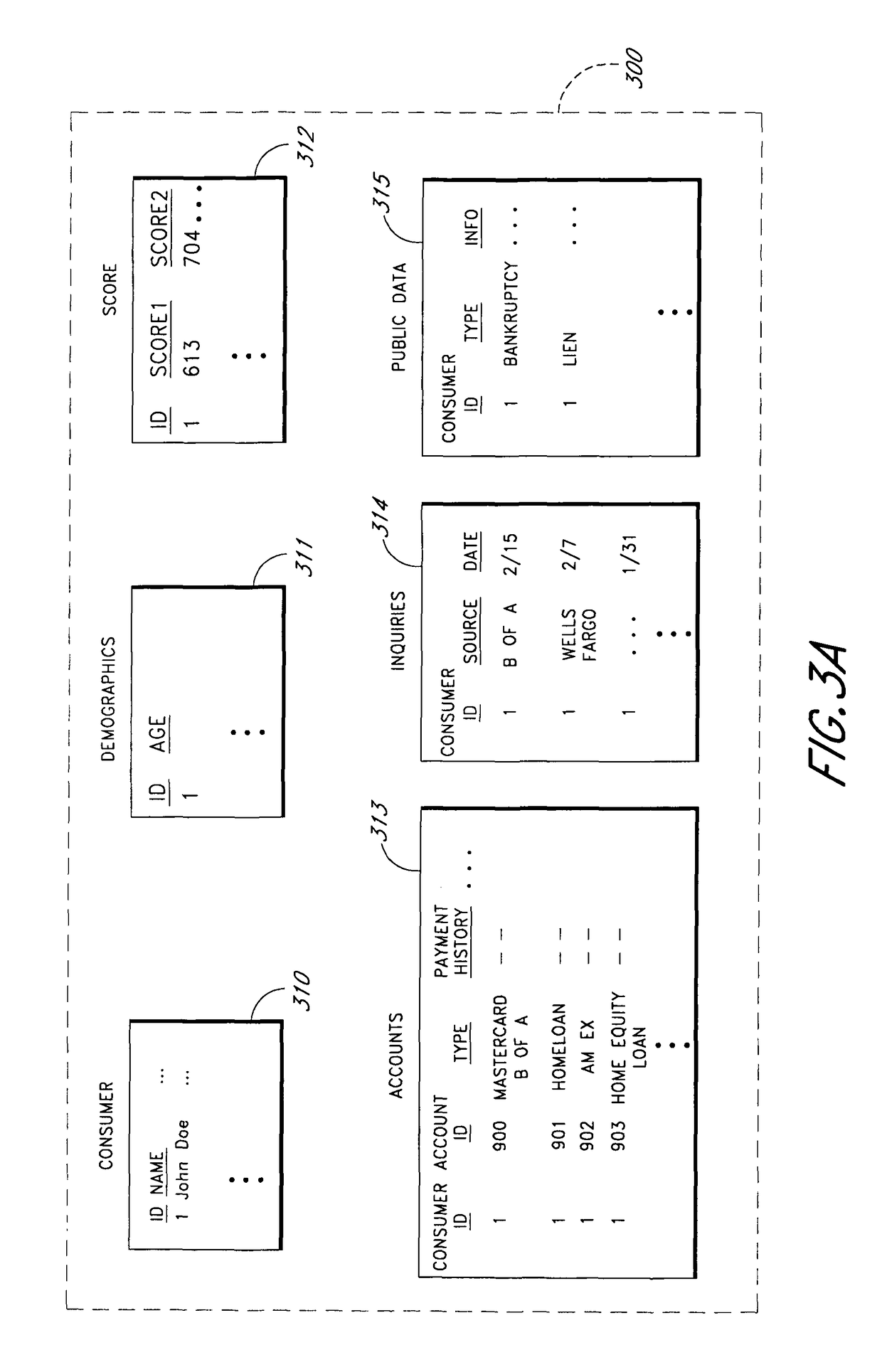Systems and methods for optimizing database queries
a database and query technology, applied in the field of database query optimization, can solve the problems of not always feasible to pre-calculate and store derived and aggregated data, prohibitively long time-consuming access to massive views in memory in response to queries, and high processing costs of join operations, so as to reduce the consumption of system resources and increase the response time
- Summary
- Abstract
- Description
- Claims
- Application Information
AI Technical Summary
Benefits of technology
Problems solved by technology
Method used
Image
Examples
Embodiment Construction
[0031]FIG. 1 is a block diagram depicting an overview of one embodiment of an online database 110 and associated data warehouse 150 system. As depicted in FIG. 1, an online database 110 may receive data input from a variety of sources 120-124. For example, a credit bureau may implement a system such as that depicted in FIG. 1 for maintaining credit-related information about consumer activities and may receive input regarding'consumers from financial institutions 121, merchants 122, lenders 123, government entities 124, and other data sources 120. In other embodiments, other types of data may be stored in the online database 110 as provided by other types of data sources.
[0032]The online database 110 may be configured to receive, update, and store vast amounts of data. For example, in one embodiment, a credit bureau uses the online database 110 for storing credit-related data received from a variety of sources 120-124 for over thirty million consumers. Such data may include, for exam...
PUM
 Login to View More
Login to View More Abstract
Description
Claims
Application Information
 Login to View More
Login to View More - R&D
- Intellectual Property
- Life Sciences
- Materials
- Tech Scout
- Unparalleled Data Quality
- Higher Quality Content
- 60% Fewer Hallucinations
Browse by: Latest US Patents, China's latest patents, Technical Efficacy Thesaurus, Application Domain, Technology Topic, Popular Technical Reports.
© 2025 PatSnap. All rights reserved.Legal|Privacy policy|Modern Slavery Act Transparency Statement|Sitemap|About US| Contact US: help@patsnap.com



